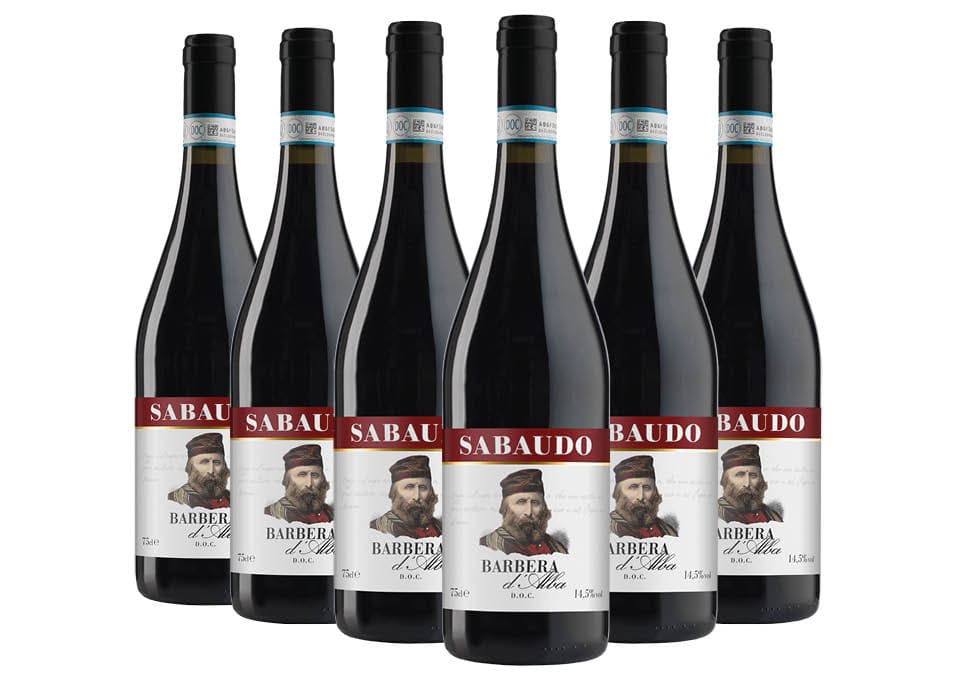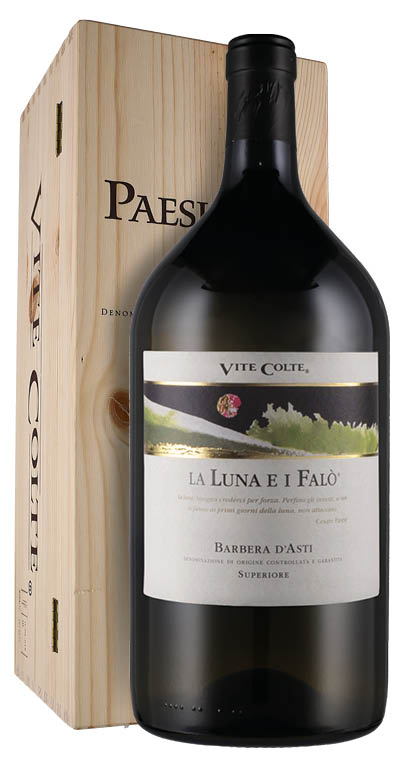Barbera
Barbera is a grape variety widespread above all in Northern Italy. The areas of choice for the Barbera grape are Piedmont and Lombardy: in Piedmont it is above all the areas of Asti, Alba and Monferrato that contribute to the success of Barbera, which is also connoted for women, such as Barbera. Barbera grapes are in fact at the center of two important appellations such as that relating to Barbera d'Asti DOCG with at least 90%, Barbera del Monferrato Superiore DOCG with at least 85% of Barbera, Barbera d'Alba DOC with at least 85% of Barbera. From the lands of lower Piedmont, Barbera then spread to the area of the Tortona hills, Oltrepò Pavese, up to the Piacentino valleys. Due to its generous and vigorous nature, Barbera was then planted in other areas of the peninsula and still today we find it present in Umbria, Marche, Abruzzo, Campania, Apulia, Basilicata and Calabria. Like many European varieties, Barbera has followed the migratory flows that have brought it to some countries of the new world such as Australia, Argentina and to the United States in particular to California. Wine once considered to belong by right to the peasant culture and very edgy by virtue of high levels of acidity, today Barbera is vinified with avant-garde techniques that reduce its disruptive character to create wines for immediate consumption or with greater freshness as more cutlery and complex variants. With historical evidence that accredits the presence of the vine since the eighteenth century and with the enormous diffusion it has enjoyed in recent times, Barbera is no longer in the shadow of Nebbiolo e Grignolino as it can boast its own market, defined above all by the interest of the public who seems to have discovered and exploited its potential. This is also due to the fact that the Barbera grape has good vigor and is very productive: Above all this second characteristic is the basis of its success and its diffusion, so much so that together with Sangiovese, it remains today the most cultivated red grape variety in Italy. The grape produces quite large and heavy clusters, with dark blackish blueberries covered with abundant bloom. Barbera wine has very particular and recognizable characteristics: the color is ruby red with violet reflections. The nose expresses intense aromas with vinous notes, fresh aromas of ripe red fruit, violets and spices. The sip is dominated by an acidity that refreshes the palate in such an overwhelming way as to become the real distinctive feature of the wine. Among the most successful combinations we find the dishes of Piedmontese cuisine such as mixed boiled meats, cooked meats, agnolotti with meat sauce, cotechini, polenta and sausages, all foods that benefit from the acid freshness of Barbera to balance a certain fatness.
Barbera d'Asti and Barbera d'Alba
Barbera d'Asti DOCG and Barbera d'Alba DOC wines are produced in different municipalities and correspond to two different appellations. Despite being a few tens of kilometers away, the cities of Asti and Alba present two wines made from Barbera grapes with slightly different characteristics. Barbera d'Alba DOC, also present in the Superiore version, is usually vinified in purity even if it is not unusual to add a small percentage of Nebbiolo (maximum 15%). For Barbera d'Asti DOCG the percentage of Barbera grapes must be 90% while the grapes must come from land located between the provinces of Asti and Alessandria. For the mention 'Superiore' the Barbera d'Asti DOCG includes the mention of the name of the vineyard and respects a minimum aging of 14 months, of which at least 6 in wooden barrels.
What are the characteristics of Barbera wine?
Barbera wine has a medium or high intensity ruby red color. Floral and ripe fruit aromas emerge on the nose, while on the palate they are finished with a pleasant spiciness that suggests a medium or full body, good structure and distinct tannins. The finish can be medium or long.
What are the characteristics of the Barbera grape?
The Barbera grape has a medium, pentagonal, five-lobed leaf and has a compact pyramidal cluster with medium-sized berries, a medium-thick and bluish skin.
How many alcoholic degrees does Barbera wine reach?
Barbera d'Asti DOCG must have a minimum alcohol content of 12%. Barbera d'Alba DOC can have a minimum alcohol content of 11%.
Barbera d'Alba DOC 2023 Sabaudo
A wine made from pure Barbera grapes, in the Monforte d'Alba vineyard. A native Piedmontese grape, among the most loved and appreciated in Italy, it is enhanced in this wine that is the emblem of the terroir of origin. The soil is particularly clayey and this gives the wine a splendid minerality. All its Piedmonteseness is expressed, in addition to the blend, also in the label, which depicts the great Garibaldi, patriot, general and politician, born in Nice in 1807.
Once the grapes arrive in the ...
View product pageBarbera d'Alba DOC 2023 Sabaudo

Colli Tortonesi DOC Monleale 2017 Vigneti Massa
This Monleale is a red wine produced in the Colli Tortonesi by the Vigneti Massa agricultural company, with Barbera grapes grown in various historic plots such as Bigolla, Campolungo, Fontana, Casareggio, Vignetta due, Cerreta, and Vecchia Cerreta. These vineyards, located between calcareous and calcareous-clay soils with mainly east and west exposures, create a mosaic of terroirs that give rise to a wine with authentic and territorial character.
The vinification takes place according to traditio...
View product pageBarbera d'Alba Superiore DOC 2022 Casa E. di Mirafiore
Barbera d'Alba Superiore from Casa E. di Mirafiore comes from vineyards located in the municipality of Serralunga d'Alba, in the province of Cuneo.
It is produced with 100% Barbera grapes, harvested and selected entirely by hand. Fermentation takes place in stainless steel tanks at controlled temperature for 12-15 days. Subsequently the wine ages for 12 months in oak barrels and for a further 6 months in bottle, before being marketed.
Barbera d'Alba Superiore from Casa E. di Mirafiore has a garnet...
View product pageNizza DOCG 2019 Francesco Iandolo
Nizza by Francesco Iandolo is a Piedmontese red wine that comes from the native red grape Barbera, in Burio, in the municipality of Moasca and in Stella, in the municipality of Vaglio Serra. The vineyards are located at an altitude of 200 meters above sea level
The Barbera grapes are harvested manually in the second half of September. The grapes are vinified separately. First of all they undergo a soft destemming, before being vinified in thermoregulated steel tanks for 15-20 days, with daily pun...
View product pageBarbera d'Asti Superiore DOCG La Luna e i Falò 2022 Vite Colte
The Barbera d'Asti Superiore La Luna e il Falò by Vite Colte is born in the renowned company vineyards located in Asti, Piedmont.
It is produced entirely from Barbera grapes, selected and harvested entirely by hand. Alcoholic fermentation takes place at a controlled temperature of 28-30 °C for about 15 days, followed quickly by the start of malolactic fermentation. Ageing takes place in barriques for about 12 months, during which this Barbera with its robust structure further enriches.
It is chara...
View product pageBarbera d'Alba DOC Bricco dei Merli 2021 Elvio Cogno
Barbera d'Alba Bricco dei Merli comes from vineyards at 300 m asl, whose grapes are harvested between late September and early October.
The vinification takes place in steel at a controlled temperature. After that the wine is aged in large Slavonian oak barrels for 12 months and then 6 months in the bottle.
Barbera has a deep ruby red color and purple reflections. On the nose the aromas are reminiscent of roses, undergrowth and spices. In the mouth the wine is soft and warm, with a good structure ...
View product pageBarbera d'Asti DOCG La Luna e i Falò 2020 Vite Colte
The Barbera D'Asti Superiore La Luna e i Falò by Vite Colte are born in the renowned company vineyards located in Asti, Piedmont.
It is produced entirely from Barbera grapes, selected and harvested entirely by hand. Alcoholic fermentation takes place at a controlled temperature of 28 - 30 °C for about 15 days, followed quickly by the start of malolactic fermentation. The refinement takes place in barriques for about 12 months, during which this Barbera with its robust structure further enriches.
B...
View product pageBarbera d'Alba DOCG Granera Alta 2023 Cascina Chicco
Cascina Chicco's Barbera d'Alba Granera Alta is obtained only from Barbera grapes coming from the vineyard of the same name located in Castellinaldo d'Alba, in the heart of Roero.
The manual harvest of the grapes is followed by fermentation in steel, which maintains the freshness and purity of the fruit. The 6-month aging in oak barrels adds layers of complexity without overpowering the natural characteristics of the Barbera, enriching the wine with subtly spicy tones and greater softness.
The col...
View product pageBarbera d'Asti DOCG Rossofuoco 2023 Vite Colte
Barbera d'Asti Rossofuoco comes from the vineyards of the Piedmontese company Vite Colte, located in the heart of the Asti hills.
Obtained entirely from Barbera grapes, grown integrally according to the organic regime, this wine carries out the classic stages of red winemaking, before being bottled and resting for a short period in glass.
It shows an intense ruby red color. The nose offers interesting vinous sensations, with fruity hints of plum and cherry as a side dish. In the mouth it shows a g...
View product pageBarbera d'Asti DOCG Lavignone 2023 Pico Maccario
Barbera d'Asti Lavignone is produced by Pico Maccario, a company founded in 1997 by the brothers Pico and Vitaliano Maccario. It produces wines from the main Piedmontese denominations: Langhe, Monferrato, Gavi, Barolo and Barbaresco.
It consists exclusively of Barbera grapes which are destemmed and gently pressed. Vinification takes place in thermo-controlled steel tanks and maceration on the skins lasts 10-12 days. The wine thus obtained then ages in steel for 9 months, followed by a further 4 m...
View product pageBarbera d'Alba DOC 2023 Massolino
Barbera d'Alba di Massolino originates from vineyards located in the municipality of Serralunga d'Alba, in the province of Cuneo.
It is produced exclusively from Barbera grapes, which are harvested manually around the middle of October. The must ferments in stainless steel for 10-12 days at a controlled temperature of 31-33 ° C. Following malolactic fermentation, the wine ages briefly in steel before being destined for bottling.
It has a purple-red color of great intensity and compactness. The olf...
View product page










